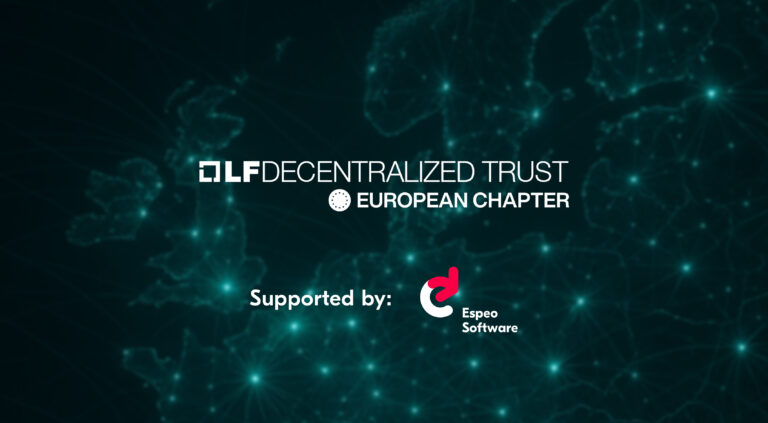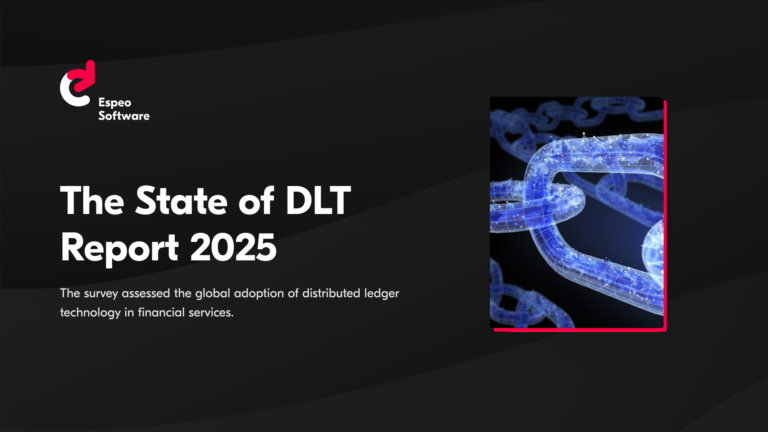Blockchain art is a bit of a paradox. The highly technical and the highly creative generally don’t mix well. However, several recent projects are bringing the two worlds together in fascinating ways. Blockchain technology is not only a tool for artists (and collectors) to protect the value of their work. It’s also increasingly becoming a medium of expression. Digital artists especially can now control the authenticity and scarcity of their work with the help of distributed ledger technology. Ownership titles, provenance, and even art asset tokenization are a few of the compelling use cases emerging.
But more than simply controlling the flow of distribution, blockchain art also opens new avenues for artists to engage a broad community of connoisseurs and enthusiasts. Even the notoriously conservative art and collectibles market is slowly starting to adopt the technology to establish provenance and facilitate art sales. Several cutting-edge startups are working on blockchain applications in the art world. Blockchain art may fundamentally shift how artists create and how collectors collect.
Blockchain art market
Elena Zavelev, CEO of the New Art Academy believes digital artists will benefit the most from DLT. She wrote in Forbes, “For the first time ever, limited editions of digital art are possible thanks to blockchain technology. Digital artists can create limited editions of their works, providing a new way to grow their market. Previously, the bane of digital art has been the fact that it’s easy to copy and pirate.”
Projects such as CryptoKitties and CryptoPunks were among the first examples of editioned blockchain-based art. Art projects as much as technical feats, the unique figures demonstrate blockchain technology’s usefulness in this sector in a way for everyday people (like me) to easily grasp.
Each CryptoKitty and CryptoPunk is unique and cryptographically secure. While these original works are cute, there are deeper implications for artists and other content creators. Once a collector buys a CryptoKitty, no one can forge the originals thanks to the ERC-721 token. Think of them like baseball cards without the central authority. While blockchain technology guarantees uniqueness, it also limits distribution making these digital assets more valuable for collectors.
Radical Shift
Price speculation in CryptoKitties threatened to collapse the Ethereum network late last year as collectors flocked to buy and trade the exclusive cartoon cats. Some even sold for hundreds of thousands of dollars as interest peaked. Many criticized the craze as frivolous but failed to see the bigger picture. More than a way to speculate, this decentralized ownership model for an original digital artwork is a radical shift in the art world.
Immutability is useful for both artists and collectors. Unchangeable authorship information, for example, allows living artists to prove that their work is original. Once an artist sells a work, a record of its sale also goes onto the blockchain linking any future buyers to a clear history. Buyers benefit from investing in an immutable digital asset.
Blockchain as medium
Artists are also taking blockchain a step further and incorporating it into their work. Brooklyn-based platform Snark.art calls itself a blockchain art laboratory. The startup aims to change the relationship between collectors and artists. According to chief marketing officer Fanny Lakoubay, who spoke to me over Telegram, ”Snark.art is producing conceptual art experiments on the blockchain with established artists who want to reach the crypto community and get traditional art collectors to discover complex and conceptual digital art projects.”
Their first collaborative experiment in blockchain for art is Eve Sussman’s 89 seconds atomized. The video installation is a reimagining of Sussman’s 2004 video installation 89 Seconds at Alcazar. In the original work, Sussman recreated the moments prior to and just after Velasquez’s masterwork Las Meninas in film. In 89 Seconds Atomized, however, the artist split the video installation into 2,304 atoms at 20 x 20 pixels each. Collectors can buy individual atoms — similar to asset tokenization — and decide whether to display their atom to reconstruct the work, or not.
Lakoubay explained that owning a piece is slightly different than fractional ownership. “[Collectors] own an atom entirely,” she said “and can decide what to do with it without having to have consensus from all other owners. It is a choice for you to take part in the buyer community to reconstruct the original work by lending your piece.”
Community experiment
89 Seconds Atomized is not only an art installation but also an experiment in digital ownership and community. Users can view their own atoms on the platform, or either borrow or purchase atoms from other users to view it. Snark.art also encourages the community to organize their own screenings. Granting access to individual atoms is a defining aspect of the concept. “89 seconds could not exist without the blockchain, it is part of the medium of the work,” Lakoubay said.
What’s so groundbreaking about the installation is that it’s a conceptual artwork first, and an investment vehicle second. The community of atom owners is as much a part of the work as the film itself. Though both have implications for the art world. Art has a unique advantage in teaching a broader public about how blockchain technology works through accessible lessons. Ownership, permission, and peer-to-peer transactions are just some of the benefits blockchain technology lends to the art world. Of course, it’s also another way to speculate on price. As art enters its own asset class, investors look to blockchain art as an asset that accrues value.
Not only digital art
Digital art is not the only medium decentralization is starting to change. Some startups and more established players are looking at ways blockchain can enhance the trade in physical art and other more tangible collectibles. Just as digital art benefits from an immutable record of ownership, the more conventional art market is also adopting blockchain innovations. Similar to digital blockchain art, authenticity and a clear provenance increases an artwork’s value and reduces friction in the traditional art market.
For art collectors, provenance is an essential consideration. Investing in a fake, or stolen artwork is an expensive mistake few would like to make. However, the global trade in art and collectibles is a shadowy, unregulated market. One where you have to trust many different actors. Art fraud looms whenever a work comes up for auction. Auction houses hire teams of experts to verify the authenticity and clear provenance of any work before it sells it. Unsurprisingly, this costs both time and money. Blockchain technology could help manage all the parties involved.
Art Fraud
A 2013 case involved a woman named Glafira Rosales who claimed to be selling previously unknown 20th-century paintings from masters such as Mark Rothko and Willem De Kooning. Instead of being genuine paintings, a Chinese painter was mimicking the artists’ styles and “aging” the works with tea, or dirt. She sold a total of $80 million dollars worth of fake art before the fraud was uncovered.
While blockchain may not help directly in preventing theft, it can help establish ownership as well as a history of transactions. One of Espeo Blockchain’s developers Krzysztof Wędrowicz believes blockchain technology could help auction houses and buyers spot fakes. “Let’s say each artwork could be digitized into a cryptographic print,” he said. “This proves that even if someone would forge a piece of art — to create something which is really really similar, in terms of what your eye can see — you can’t see the difference. With a blockchain, you can prove that a work is not authentic.”
Currently, a work has to have an extensive review each time it comes up for auction. For an effective title registry to work, however, an expert or centralized institution will have to establish provenance, to begin with. Wędrowicz admits that “You need some authority to start with — so yes it’s some kind of risk.” However, several startups are developing novel ways to track provenance and authenticity using blockchain technology.
Decentralized title registry
One project addressing the provenance of art and collectibles is Artory. According to the company’s website, it’s a decentralized title registry for art and collectibles – a $2 trillion-dollar market. Currently, this asset class lacks a central registry. Artory stores vital transaction data and the history of ownership, and is easily accessible to all parties involved. Wide adoption, they claim, will help reduce costs and give investors more confidence.
Adoption across the art market, of course, will depend on how stakeholders will perceive the change. Artory remains confident that large stakeholders will see the benefits. Previous efforts to keep a central registry have failed largely because collectors don’t trust central entities with their information and intermediaries would like to keep their jobs. However, due to the decentralized nature of Artory, more stakeholders are willing to accept it, they claim.
Last month, Christie’s concluded the sale of the Barney A. Ebsworth Collection of 20th-century art. The record-breaking auction brought in more than $320 million. The auction was not only hugely profitable, but the sales were also recorded on Artory’s decentralized, public blockchain.
Provenance tracking on a blockchain could add more transparency to the art market and facilitate valuations, provenance studies, insurance claims, and even asset-backed lending.
Art Asset Tokenization
Similar to 89 Seconds Atomized, investors can also own individual pieces of physical artwork. Art asset tokenization enables many investors to own parts of an asset. Real estate asset tokenization is another industry where companies are using blockchain technology to tokenize.
Developers claim that blockchain art asset tokenization will add more liquidity to the market encouraging more people to invest in smaller units. Fractional ownership gives investors the chance to own small parts of famous works of art.
Blockchain advisor Francois Devillez has written extensively on asset tokenization and believes it’s the future of blockchain.
“[Asset tokenization] works as follows,” Devillez told me. “Let’s say you have a house, you bring the house into a company and you tokenize the share. So you don’t tokenize the asset itself directly. With art, you associate a token with ownership. When you sell the art, you sell the token with it.” Unlike digital art, tokenizing tangible art is more about representing ownership.
Fractional Ownership
Art startup Maecenas is already tokenizing art assets. Maecenas is an unabashedly investment-focused platform looking at art assets as a way to make money. Art sold on the platform is stored in safe facilities far away from the eyes of the public. Nevertheless, for investors who view art as an asset class, this is perfectly natural.
In a conversation over Telegram, Macaenas press spokesman Mayank Jain said, “we are pioneers in asset tokenization and we firmly believe in its financial potential to reinvent some industries such as the fine art market. But [asset tokenization] shouldn’t be an end in itself. The disruption lies in the value proposition behind the technological process.”
Greater Liquidity
Maecenas claims that splitting million-dollar paintings into smaller pieces will open the market to greater participation. Liquidity is the main argument for this kind of innovation. As in real estate asset tokenization, being able to quickly buy and sell smaller financial units of large assets will allow smaller investors to react to enter the market.
Maecenas’ platform runs on a public, decentralized blockchain to keep all transactions transparent and to protect the company from insider trading, according to the company’s whitepaper. When an owner wants to sell a piece of art, he or she first has to put it up for sale on the platform. Investors bid with the company’s ART token using smart contracts. Once the auction finishes, the smart contract calculates the final share price and the number of shares each investor receives. The seller then receives either ART tokens, or an equivalent crypto or fiat currency.
“Maecenas’ proposal is not just a theory,” said Jain. “Our platform is a tested and proven fractional ownership model. In September, we successfully tokenized and auctioned a 31.5% stake in Andy Warhol’s 14 Small Electric Chairs (1980), collectively raising $1.7m, and recently we revealed Project Phoenix — our upcoming sale of a tokenized Picasso.”
“Project Phoenix will be the first ‘perpetual’ digitized and tokenized work of fine art,” Jain added. A single ERC 721 token and a fixed number of ERC20 tokens will represent ownership of the physical asset. Similar to owning stock in a company, holding tokens gives investors voting power for key decisions in the painting.
Unfortunately, tokenizing the paintings makes them difficult to view in person. Each goes into a safe storage facility in a “freeport” such as Singapore’s Le Freeport. Keeping art stored in these facilities allows investors to avoid high taxes involved in selling luxury items.
Conclusion
Blockchain technology is revolutionizing the art world in a number of fascinating ways. From cutting-edge blockchain art, asset tokenization, and decentralized title registries, blockchain tech is driving innovation in the space. Blockchain not only controls the distribution of digital assets, but also records vital provenance information, and opens the market to investors. Many of these projects are still in their infancy but have also demonstrated successful use cases for the technology.
Images in order of appearance:
CryptoKitty
Las Meninas Diego Velazquez 1656-1657
Chop Suey Edward Hopper 1929
Big Electric Chair Andy Warhol 1967





